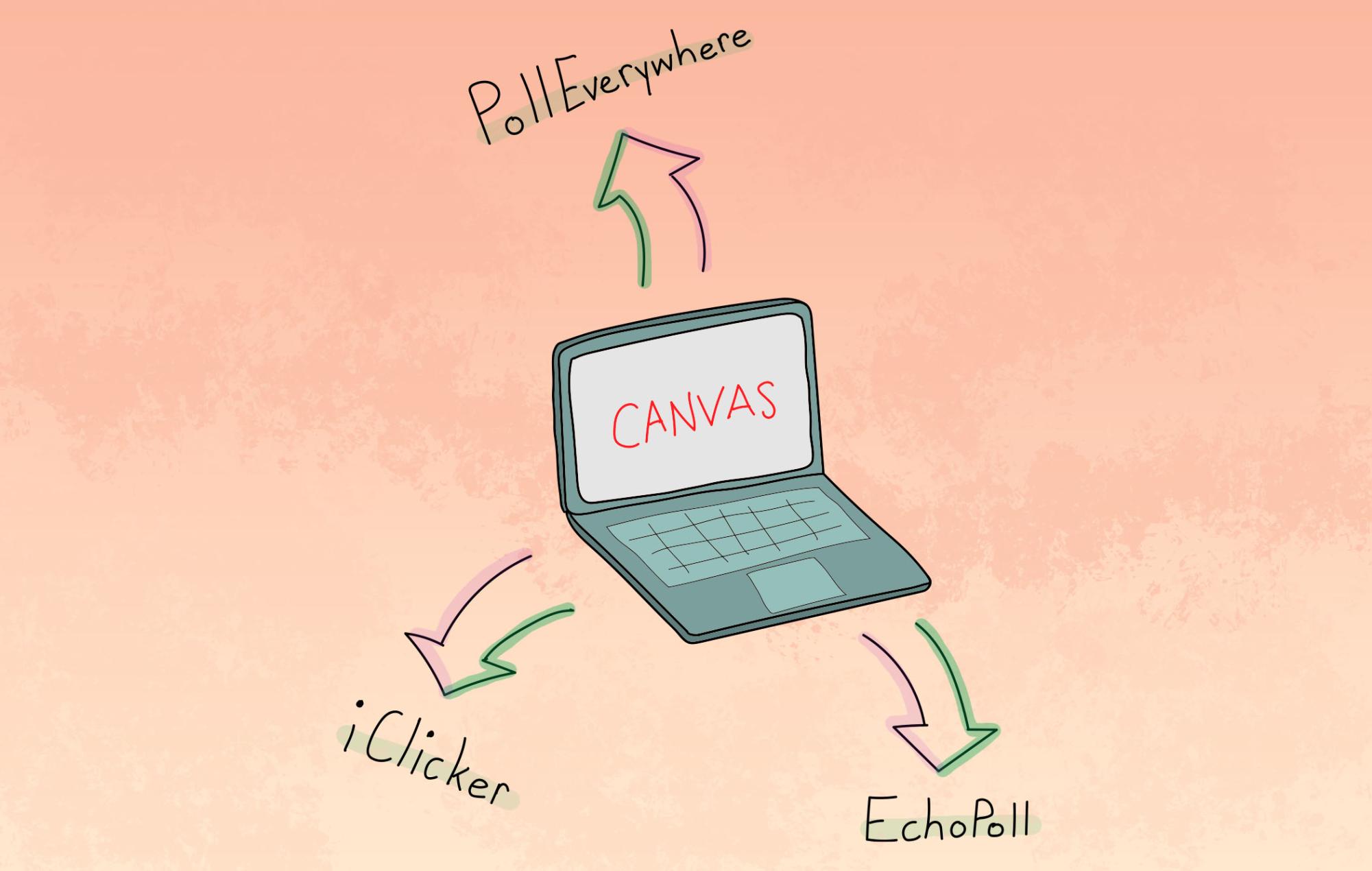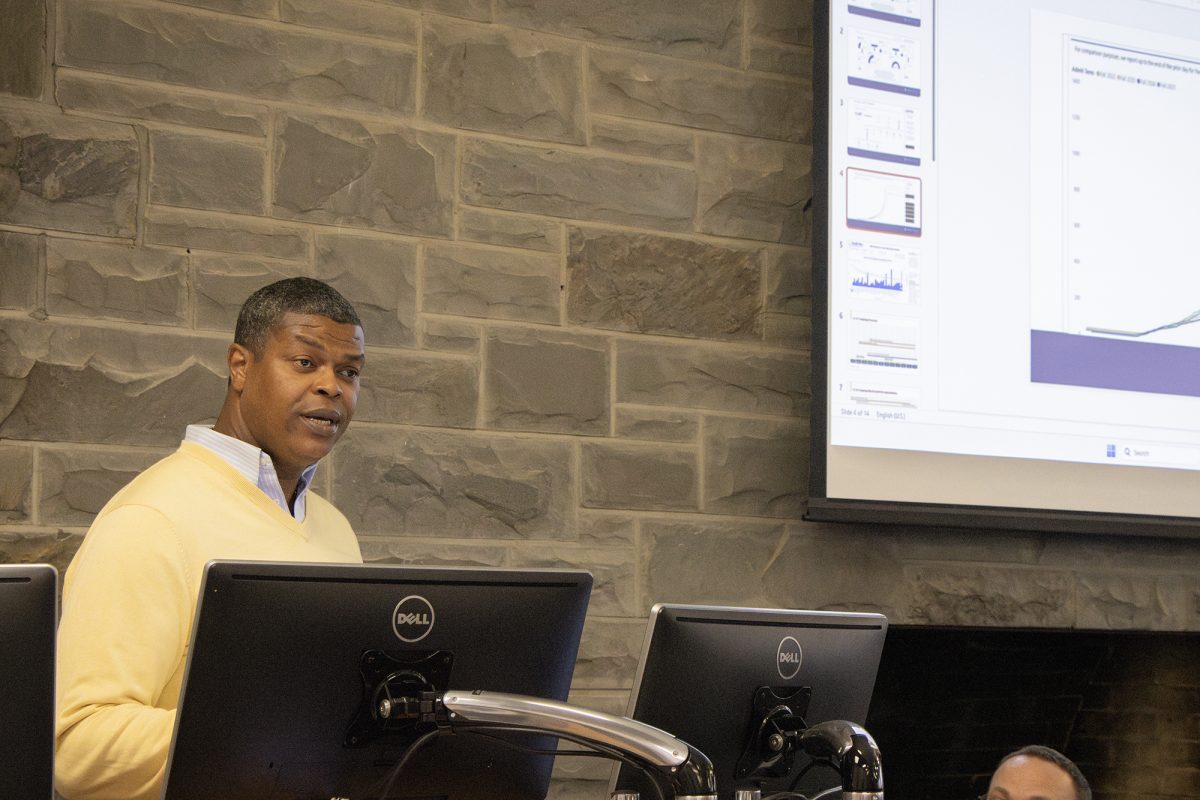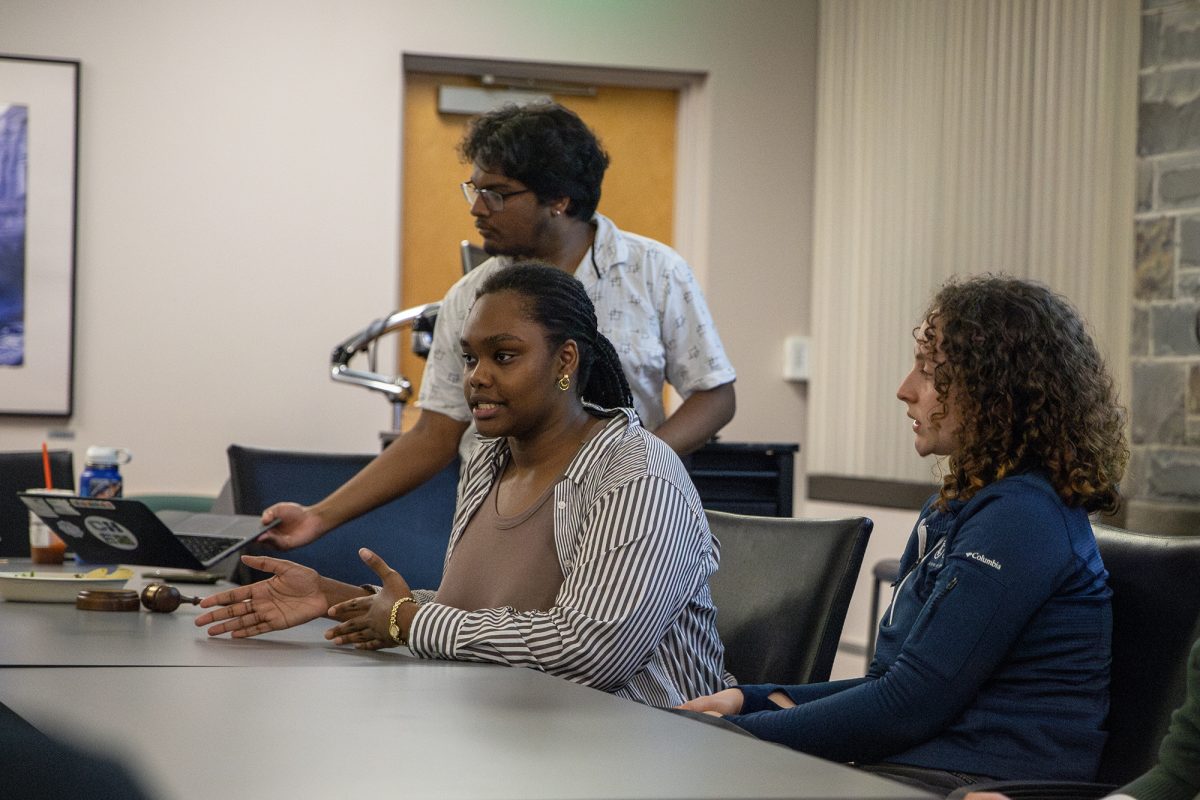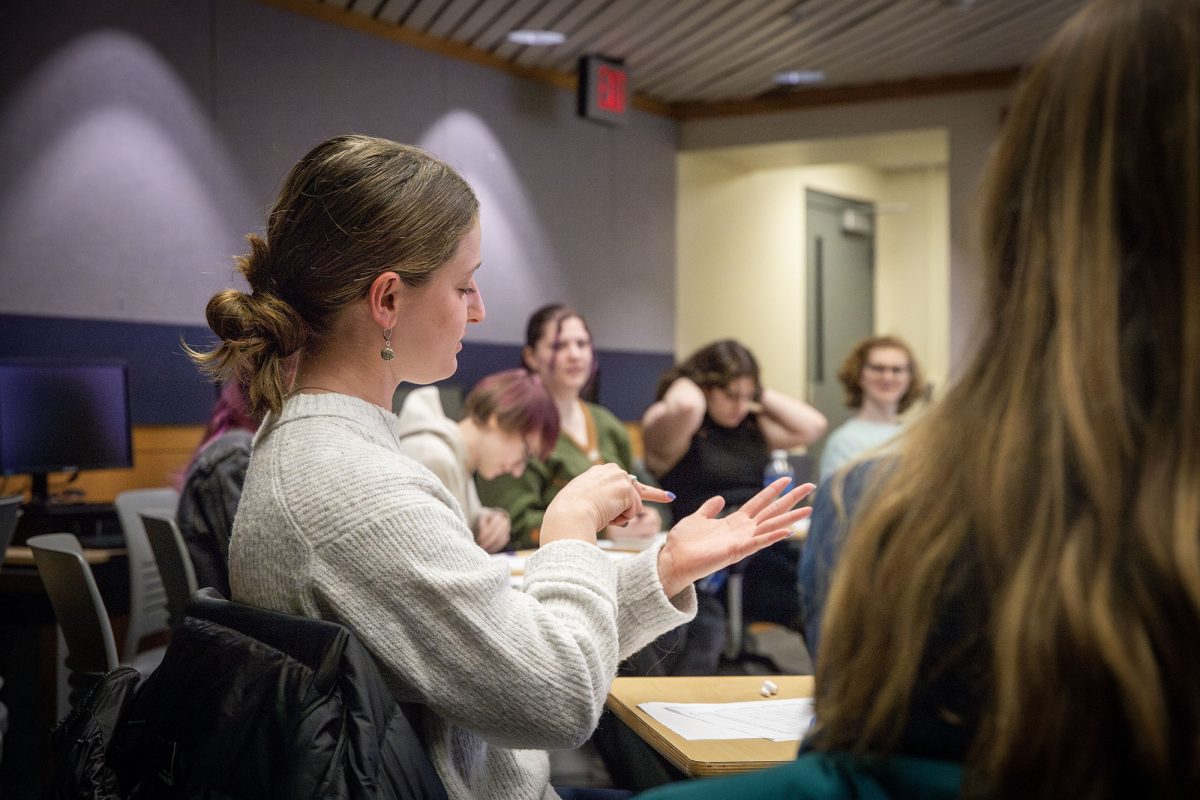Some Ithaca College faculty and staff members are trying classroom response systems in their Spring 2024 classes through a pilot program conducted by the college’s Educational Technologies Advisory Committee.
Classroom response systems are applications designed to increase student engagement. Students answer questions on their devices, which the systems share with instructors. They also collect data about student participation and attendance for faculty and instructors.
ETAC is a group composed of 15 staff, faculty and students from across campus that shares perspectives with college leadership about technology used for learning, teaching and research. This feedback guides future changes and investments in institutional technology.
The committee is sponsored by Melanie Stein, provost and senior vice president for academic affairs; David Weil, vice president and chief information and analytics officer; and the Division of Information Technology senior leadership team.
Jenna Linskens, director of learning and innovative technologies for the Center for Instructional Design and Educational Technology and co-chair of ETAC, said the college had a learning management system governance committee composed of faculty and staff from departments across the college that implemented its previous learning management system, Sakai. Linskens said that when the college switched to using Canvas for its LMS, Stein and Weil wanted to form ETAC to continue working to incorporate technology into learning.
“They really wanted to continue to have this partnership with faculty and staff to oversee the technology … so that it was a community effort, rather than a top-down or even a bottom-up,” Linskens said. “It was more of this, ‘Let’s meet in the middle and make sure that we’re providing everything that faculty need, and we’re doing it in a responsible way.’”
Stein said via email that she is very pleased with how ETAC members have represented different voices on campus and made recommendations to her and Weil.
“They have thoughtfully surveyed and assessed the needs across campus, and by seeking and incorporating community feedback they ensure that the solutions we implement are the ones that best meet the needs of the community,” Stein said.
Colleen Countryman, assistant professor in the Department of Physics and Astronomy and co-chair of ETAC, said ETAC often asks for feedback about the college’s educational technology from the campus community through forms posted on Intercom and from the Student Governance Council representative, President senior Carli McConnell. In Fall 2022, ETAC surveyed faculty and students about their experiences with college technology and any additional technology needs that were not being met.
“One of the patterns that emerged from that data was a really strong interest in these classroom response systems,” Countryman said. “It was clear that we need a functional classroom response system, something that helps engage students and really facilitates learning in the classroom in an active way.”
Linskens said the college currently has a license with the classroom response system Top Hat. Linsksens said faculty have shared that Top Hat does not meet their teaching needs and that they are concerned that it is a cost burden to students. Students must purchase their own subscription to Top Hat, which costs $33 for one semester.
In Fall 2023, the ETAC Student Response Systems subcommittee asked faculty to share their preferences for a new classroom response system through a Qualtrics survey. Based on the suggestions, Countryman said the subcommittee searched for response systems that could connect to Canvas, had no cost for students and had clear features for faculty, staff and students.
“We don’t want the technology to be another thing that they have to learn,” Countryman said. “We want really the focus to be on the concepts that they’re learning in the class, and so to have an intuitive user experience is something that was really important and something that was easy to facilitate by the professors themselves or the instructors of these classes.”
The subcommittee narrowed down the contenders to three classroom response systems: iClicker, PollEverywhere and Echo360 Poll. Before the start of Spring 2024, the subcommittee asked for faculty volunteers to try the systems. Linskens said via email that 19 faculty members and two librarians are participating in the pilot, and they could choose which systems or how many systems they wanted to try.
“Some faculty are more comfortable just trying one and providing feedback on that, some faculty might try two, some may go for all three and see what it’s like and then provide feedback,” Linskens said. “You know, what features did they like from each of the different systems? What features did they find were more of a challenge?”
Linskens said ETAC’s goal is to recommend one of the response systems from the pilot program to Stein and Weil by March 1 to allow enough time for negotiating the contract, adding it to the college’s budget and preparing informational and training resources for faculty and students. Linskens said ETAC hopes that the college will provide a paid subscription for students to the new response systems.
Countryman and Linskens said they are still determining specific details of how they will collect feedback from students who are trying the classroom response systems.
Rebecca Brady, assistant professor in the Department of Biology, is serving as a faculty volunteer on the student response systems subcommittee. Brady said she uses classroom response systems frequently in her introductory-level courses to create an active classroom environment. She said she is trying iClicker with her students and has been impressed by how easy the interface is for students and educators.
“Some of these polling systems you have, the instructor has to pre-enter all of their questions in advance, and I have a lot of questions, so that can be very time-consuming,” Brady said. “[With iClicker], I can just use whatever’s on my slide. It’s a lot more flexible. So if students are struggling with a concept, we can ask two or three more questions on the fly, as opposed to being limited by the slides that I can put it in advance.”
First-year student Sarah Chraibi is taking Brady’s Fundamentals of Biology course. She said she feels a little stressed about answering the questions correctly, but she likes that iClicker shows how many students answered each question correctly.
“I feel like I’m being quizzed every class, so I’m kind of like a little on edge,” Chraibi said. “[But] if you don’t understand something … you can know that other people don’t understand it either. So it’s like, ‘OK, I’m not the only one.’”
Chraibi said she liked working with iClicker so far in the pilot because it has helped her to be more accountable for the content that she is learning and be more engaged in class.
“I feel more comfortable participating now because if I got the iClicker question correct, then I can raise my hand and I can say something,” Chraibi said. “Even if I got it wrong, it’s like, OK, well, [Brady] already knows I got it wrong. I might as well say I got it wrong and just ask her to go over it.”
Brady said that as a faculty member who frequently uses the college’s educational response systems, she appreciates that she can try the prospective response systems and share her perspective. Brady said she and the other subcommittee members are trying to hear many opinions and find a system that can be successful across the college.
“We’re trying to be aware of the different ways that people use classroom response systems, and make sure that we get a tool that’s versatile enough for everybody, or as many people as we can accommodate,” Brady said.



















